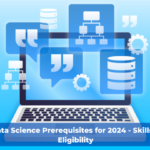We Provide Data Analytics Techniques & Solutions
- Get Trained by Trainers from IIT, ISB & IIM
- 184+ Hours of Live Classroom or Online Sessions
- 3 Capstone Live Projects
- Free Life-Time eLearning Access
- Dedicated Program Coordinator
- Re-attend Module with No Extra Cost
- 100% Free Internship
- 100% Job Placement Assurance
Certification courses
Data Science Certification
AI Certification
Data Analytics Courses
Know About Us
It involves using statistical and computational techniques to transform raw data into meaningful information, which can then be used to inform decision-making. Data analytics is widely used across different industries and fields, such as finance, marketing, healthcare, and sports. It has become increasingly important due to the growth of big data and the need to derive valuable insights from it. Data analytics professionals use a variety of tools and techniques, including statistical software, machine learning algorithms, and data visualization tools, to analyze data and generate insights.
We are dedicated to producing high-quality professionals who can tackle complex technological challenges with ease. Learn More
One Data Analytics Programs
One popular data analytics program is Microsoft Excel. It offers a wide range of data analysis tools, including functions for statistical analysis, data visualization, and data mining. Excel also has built-in features for pivot tables and charts, which can help users quickly summarize and present data in a meaningful way. Additionally, Excel supports add-ins and plugins for more advanced analytics tasks. However, for more complex data analysis needs, specialized software such as Tableau, Python, or R may be required.
What Will You Learn?
In a data analytics course, you can expect to learn a wide range of skills and techniques that are necessary to work with and analyze data effectively. Some of the topics that you may learn include:
Data Collection: Learn how to collect data from different sources such as surveys, social media, web scraping, or other public data sources.
Data Cleaning: Discover how to prepare data by cleaning it, handling missing data, or outliers.
Data Visualization: Create meaningful visualizations using charts, graphs, and other visualization tools to communicate insights.
Statistical Analysis: Apply statistical methods to identify patterns and relationships in data, test hypotheses, and make predictions.
Machine Learning: Learn how to use machine learning algorithms to make predictions and classify data.
Data Storytelling: Combine data visualization, statistical analysis, and storytelling to communicate insights and recommendations.
Ethical considerations: Understand the ethical and legal implications of working with data, privacy concerns, and responsible use of data.
These are some of the topics that you can expect to learn in a data analytics course. The specific content and depth of the course will depend on the level of the course, program, or instructor.






